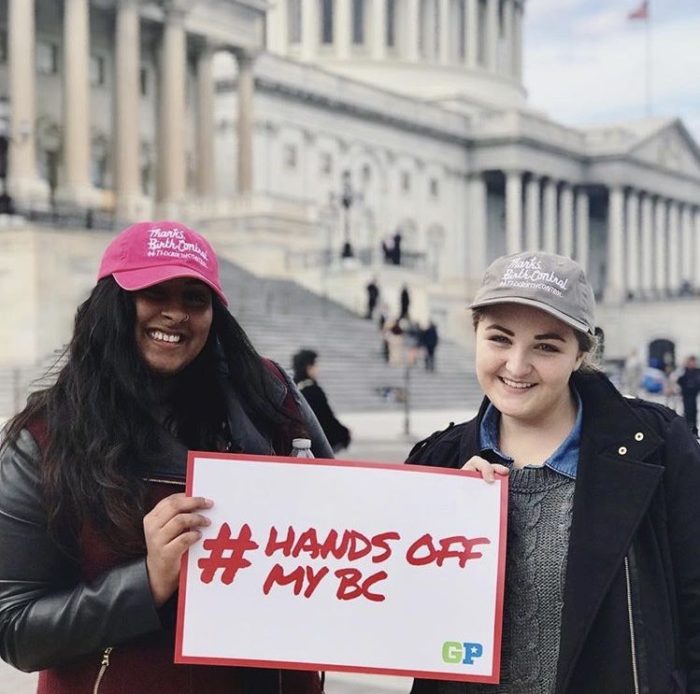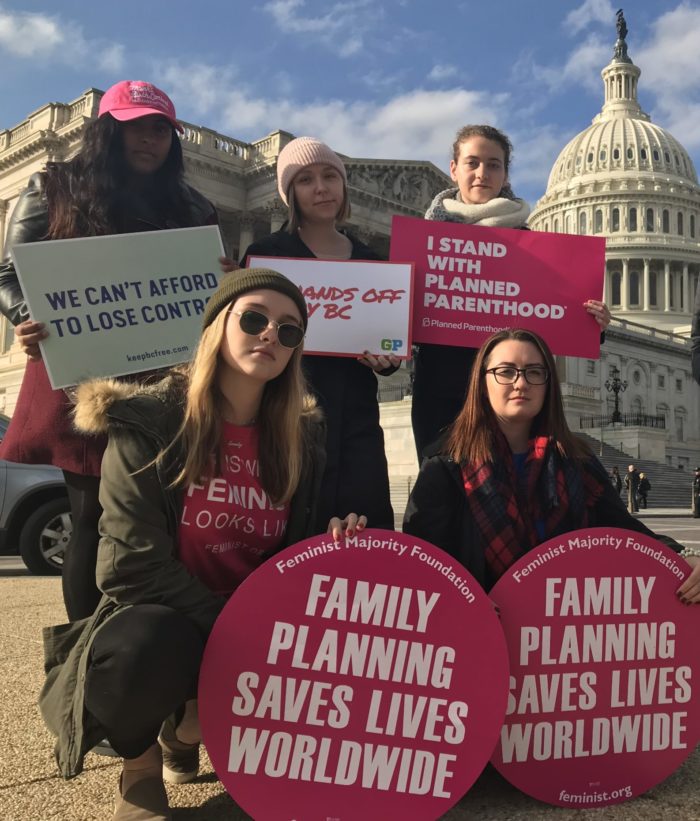
What You Need to Know
Birth control is used for many things, including managing health concerns like PCOS and endometriosis, mitigating symptoms of PMS and PMDD, and reducing acne. However, birth control’s main goal is pregnancy prevention: contraception plays an important role in enabling individuals to control their reproductive lives, and should be accessible and affordable to all who want it. However, comprehensive family planning services (like those funded by Title X) are often being cut, despite being based in science and proven effective, unlike the abstinence-only education the federal government has wasted over $1.5 billion dollars on since 1996.
#HandsOffMyBC
Under the preventive care package of the Affordable Care Act (ACA), millions of people are able to access birth control for free.
In 2015, the Obama administration issued guidance specifying that insurers cannot limit coverage for transgender people based on their gender identity or the sex assigned to them at birth. Additionally, health insurance plans have been required to cover FDA-approved contraceptives without co-pays or deductibles since 2012. However, there are exceptions:
Some older insurance plans are considered “grandfathered” and are not required to provide free birth control unless they lose this status. As of 2019, 87% of workers with employer-sponsored insurance were enrolled in plans that must provide free preventive services. For religious reasons, churches and other houses of worship are also exempt from having to provide birth control coverage to employees or their dependents. In 2020, the Supreme Court upheld broad exemptions for both non-profit and for-profit companies to opt out of birth control coverage on religious or moral grounds. Religiously affiliated colleges and universities can also refuse to cover birth control for students on the school-provided insurance plan.

Title X: Making BC Affordable

Title X is a public health program funding preventative care for
millions of low-income Americans.
It’s the only federal grant program dedicated to comprehensive family planning services, and it provides funding to thousands of clinics around the country for preventive services including breast cancer screenings, pelvic exams, and STI and HIV testing. Despite the importance of these clinics, Title X funding has been repeatedly threatened: from 2010-2015, Congress cut funding for Title X by $30.5 million. Title X continued to endure cuts under the Trump Administration, including the 2019 “Domestic Gag” rule; this rule barred any clinics providing abortion care from receiving Title X funds, despite the fact that Title X funds do not fund abortion care.
As a result of these cuts, the number of Title X patients receiving care shrank by over 1 million. Title X patients are disproportionately Black and/or Latinx, women, and uninsured. Around 60% of women who use a Title X clinic consider it to be their regular source of healthcare. In 2021, the Biden-Harris Administration reversed the gag rule, restoring Title X funding to clinics nationwide. However, much damage has already been done, and Title X is still not currently meeting the needs of those it aims to serve.
